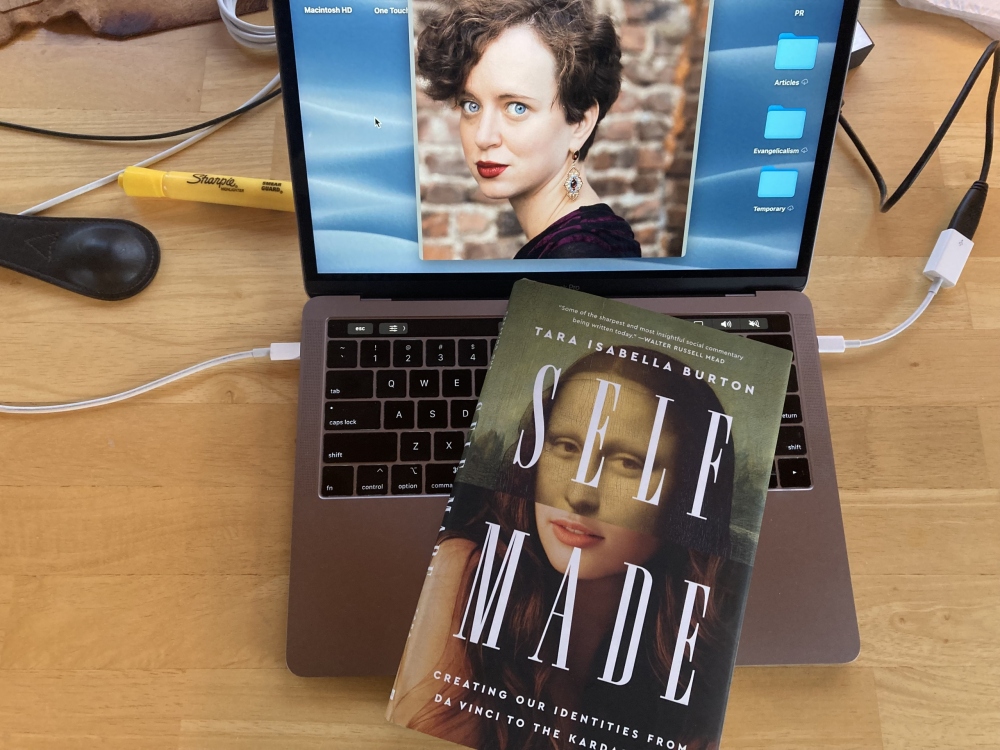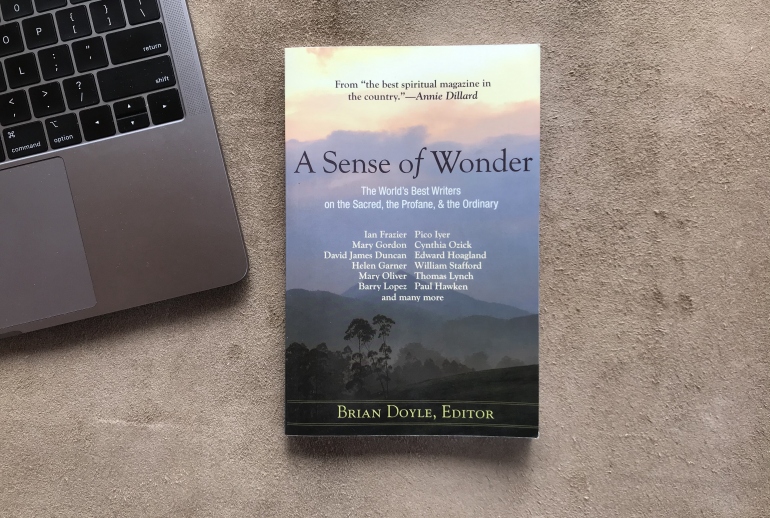I had barely begun the Introduction to Self Made when I began to suspect I was reading a discerning book by a perceptive theologian who has her finger firmly on the pulse of our world. As I read on, my suspicion deepened into conviction. Tara Isabella Burton sees our world with clarity and insight and follows the development of a powerful notion—the myth of the self-made person—as it influences politics, economics, and culture, and shapes the sense of meaning and purpose that many, if not most Americans pursue today.
On the one hand, at root this is merely Western culture’s attempt to answer one of the perennial questions of human existence, namely, who are we? What does it mean to be human? Where do we find meaning in life? Self-Made, Burton says, “is the story of how one answer—in my view the wrong one—became dominant: I am whoever I want to be.” [p. 235]
Is this not the message promoted by Tik Tok influencers, a host of reality shows, and in the pages of Inc. magazine? Today, Burton notes, “the promise of self-optimization and the conviction that we have a moral obligation to create and become our best and truest selves is encoded into nearly every facet of contemporary Western society.” [p. 206] Do not pundits assure us that everyone, everyone can prosper if they apply themselves to follow their dream in America, the land of opportunity?
It turns out that this is not a new idea, but one that began centuries ago and has morphed into its present form as society and technology has progressed. Some observers argue this is a product of postmodernism, but Burton disagrees. She begins the story in the 16th century. And she insists this is not a secular pursuit, but a profoundly religious one, and she invites us into this perspective to best understand it and speak intelligently into it.
Ultimately, our history of self-creation is not an inspiring tale of unremitting progress. But I do not think it is a tragic narrative about cultural decline and the dangers of modernity, such as we have seen in the accounts of recent cultural critics from Philip Rieff to Carl Trueman. Rather, Self-Made is an account of how we began to think of ourselves as divine beings in an increasingly disenchanted world and about the consequences—political, economic, and social—of that thinking. These consequences have both liberated us from some forms of tyranny and placed us into the shackles of others. It is a story, in other words, about human beings doing what we have always done: trying to solve the mystery of how to live as beings both dazzlingly powerful and terrifyingly vulnerable, thrust without our consent into a world whose purpose and meaning we may never be able to truly know. [p.8]
Self Made is cultural history at its best, moving chapter by chapter from the 16th to the 21st century. In a review of the book in The New York Times, book critic Alexandra Jacobs concludes: “Burton packs a lot of material into a small space to support an ambitious idea, and it would be interesting to see what she would do with more focus. Self-Made seems designed for a distracted generation: more of a tour than a tour de force.” Let’s just say I couldn’t disagree more. Self Made is a significant book, and I wish every follower of Jesus would read it.
Self Made is serious and thoughtful, but never boring or inaccessible. As Burton traces this myth from the 1500’s to today, she not only describes the thinking, philosophy, values, and technological developments that propelled these notions but tells the story of various individuals who embody the myth from century to century. And she’s a good storyteller. We learn about Frederick Douglass, Phineas Barnum, Hollywood stars, Buckminster Fuller, Kim Kardashian, Donald J. Trump, and many more. And about the artist Albrecht Dürer:
Medieval artists were traditionally anonymous. They were craftsmen, often working in collective guilds, whose output—the stonemasonry above a (church) door, the stained glass of a (church) window, the images of saints on (church) wall frescoes—was designed to reflect not individual glory but rather the majesty of the earth’s true creator: God. Credit for one’s work was superfluous at best, suspiciously prideful at worst… Self-portraits were exceedingly rare. At most, an artist might depict himself as a humble worshipper in the background of a religious scene. Then Dürer came along.
Dürer’s self-portraits—he produced thirteen, a mixture of paintings, drawings, and prints—are masterpieces of self-veneration, luxuriating in the beauty, and the glory, of his own finely rendered image. In each, Dürer appears in elegant, even aristocratic raiment (never mind that he was born a middle-class goldsmith’s son). In each, he lingers with every careful brushstroke on the delicate shape of those spiraling curls, an aesthetic so central to Dürer’s public person that contemporaries joked that he might be too busy to take commissions because of the amount of time he spent on his hair. Even when Dürer depicted himself in the background of religious scenes, he called attention to his presence, taking the then-unprecedented step of adding to the scene a cartellino, a little sign, to make sure the viewer knew exactly who he was.
Dürer didn’t merely present himself as an aristocrat, however. Rather, he evoked something even more ambitious: a god. Drawing on the iconography of religious art in which he had been steeped, Dürer created self-portraits that depicted himself as, essentially, Jesus Christ. For example, in Self-Portrait at the Age of Twenty-Eight (1500), Dürer reveals himself not in profile but facing straight on, a pose traditionally reserved for God the Son. His hair, golden in other portraits, is here rendered a dark hazelnut to match a then popular (if forged) “eyewitness” account of Jesus’s own coloring. Dürer’s index finger and thumb are raised, as Jesus’s would traditionally have been. But while Jesus’s fingers often spelled out the letters ICXC, an acronym for Jesus Christ, Dürer’s seem to be spelling out his initials, AD, as his own substitute cartellino. Those same initials appear alongside the painting’s date to the left of the head, making a distinct visual pun: “1500 AD.” Anno Domini, the year of our Lord, is also the year of Albrecht Dürer, coming into his own. [p. 10-11]
Each individual Burton introduces learned how not just to project the self they wanted to be but also to shape how their audience would see them. Thus, they made both self and reality, defining truth about themselves as what they wanted it to be. And as you might guess, even if we don’t personally accept the myth, we are affected by it—and probably complicit—without realizing it.
Read Self Made to better understand our times. And then begin to do the hard, but satisfying work, in Christian community, to find ways to live and speak the gospel into this world which is asking the right question but coming up with the wrong answer.
Book recommended: Self Made: Creating Our Identities from Da Vinci to the Kardashians by Tara Isabella Burton (New York, NY: Public Affairs; 2023) 236 pages + notes + index.
Photo credit: Photo of Tara Isabella Burton (on laptop screen) and book taken by the author with his iPhone.



